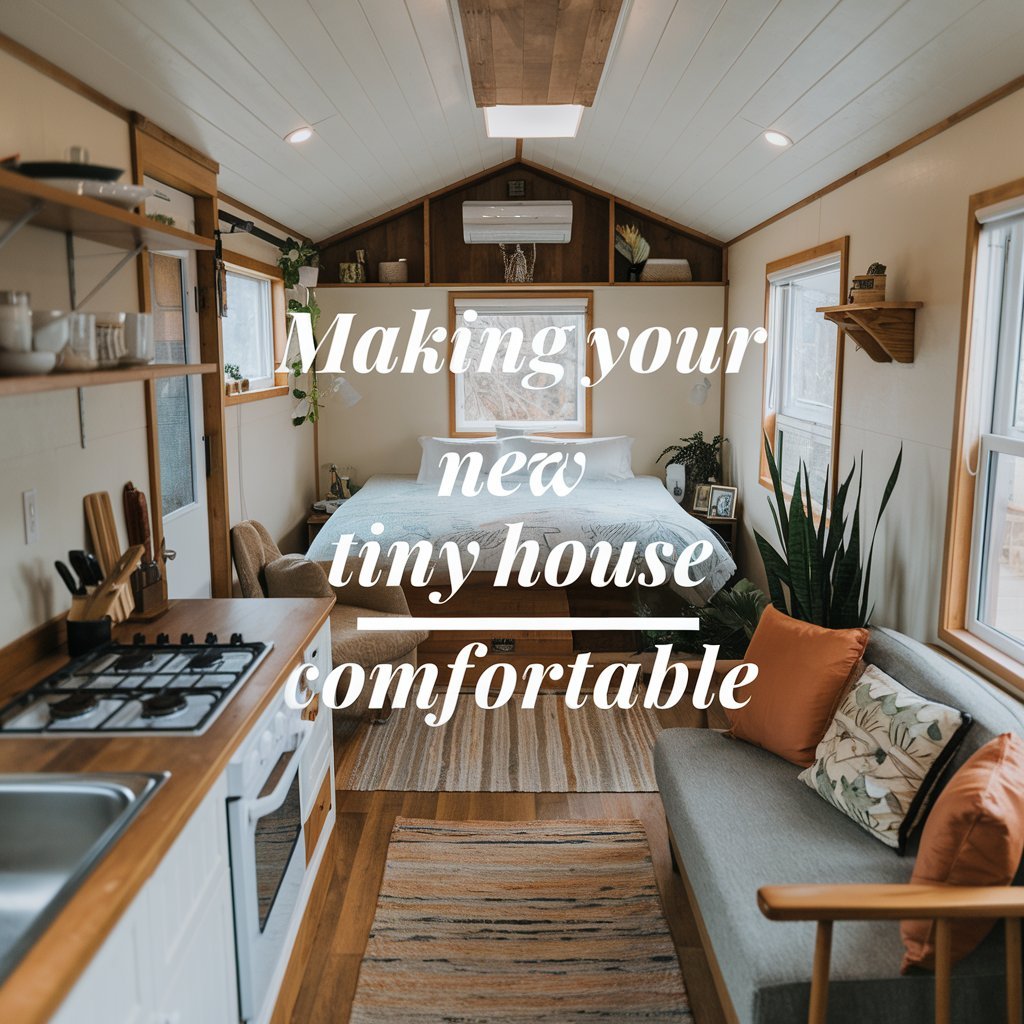The growing popularity of minimalist dwellings reflects a cultural shift toward intentional living. According to the 2023 International Residential Code, these structures measure 400 square feet or less, creating a clear standard for builders and enthusiasts. This classification excludes loft areas, allowing creative vertical designs without compromising the “tiny” designation.
Designing functional spaces within these parameters demands smart planning. Multi-level layouts and convertible furniture help residents optimize every inch. Local zoning laws and climate conditions often influence layout choices, requiring adaptability in different regions.
Owners prioritize efficiency without sacrificing comfort. Clever storage solutions like built-in cabinets and dual-purpose fixtures prove essential. Many opt for movable units to bypass restrictive land-use regulations, though stationary models remain popular for permanent residences.
Key Takeaways
- The 400-square-foot limit defined by building codes ensures safety while maintaining compact living standards
- Smart design strategies transform limited areas into fully functional living spaces
- Regional climate and local laws significantly impact layout decisions
- Dwelling purposes (full-time vs. seasonal use) dictate optimal spatial configurations
- Eco-friendly materials and energy-efficient systems align with the movement’s sustainability goals
- Proper planning reduces maintenance costs and enhances long-term livability
Understanding Tiny House Standards in the United States
Building a compact dwelling involves more than creative design—it demands compliance with building codes and regulations. The 2023 International Residential Code (IRC) Appendix Q serves as the primary blueprint, defining these structures as dwellings under 37 m² (400 sq ft) excluding lofts. This standardization ensures safety while encouraging innovative space solutions.
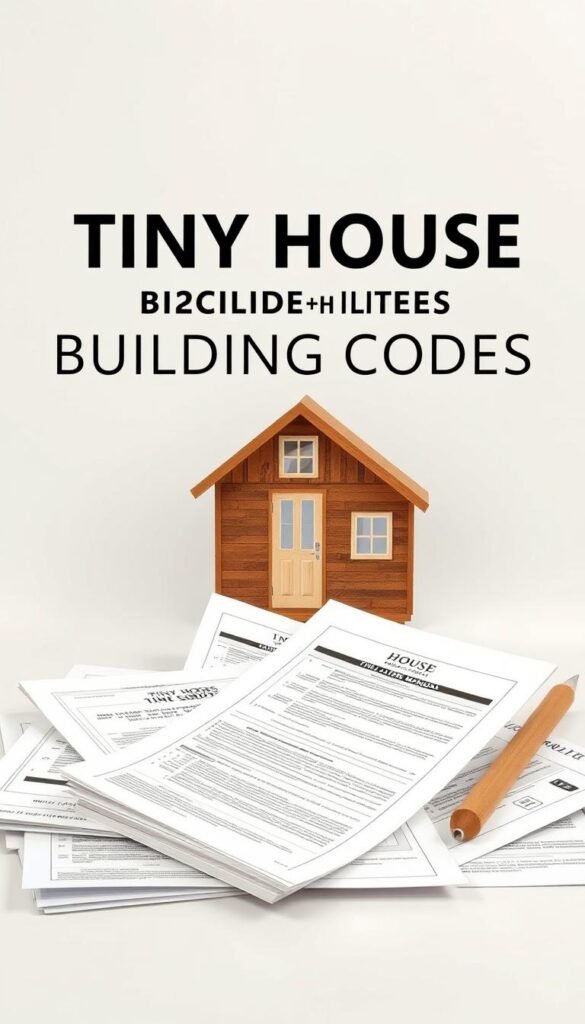
Regulatory Framework and Guidelines
State and local laws create a complex compliance landscape. While Appendix Q establishes national construction standards, municipalities often add zoning restrictions. For example, the Recreation Vehicle Industry Association clarifies that units intended as permanent residences must follow HUD guidelines rather than RV specifications.
Key considerations include:
- Electrical and plumbing systems meeting traditional home safety standards
- Variations in minimum ceiling heights between states
- Foundation requirements for stationary versus mobile units
Transportation and Safety Limits
Mobile designs face strict federal transportation rules. Units must maintain dimensions suitable for highway travel without special permits:
| Feature | Maximum Allowance |
|---|---|
| Width | 8.5 feet |
| Height (with trailer) | 13.5 feet |
| Weight | Varies by axle count |
These transportation limits directly impact window placement, roofing materials, and interior configurations. Builders often use lightweight composites and aerodynamic designs to meet requirements while maximizing living space.
What’s the ideal tiny‑house size under 400 sq ft?
Compact dwellings thrive through smart scaling. Most measure 100-400 square feet, with mobile units averaging 8.5 feet wide for highway compliance. Stationary models gain extra breathing room at 12 feet wide, proving foundation-based designs offer more spatial flexibility.
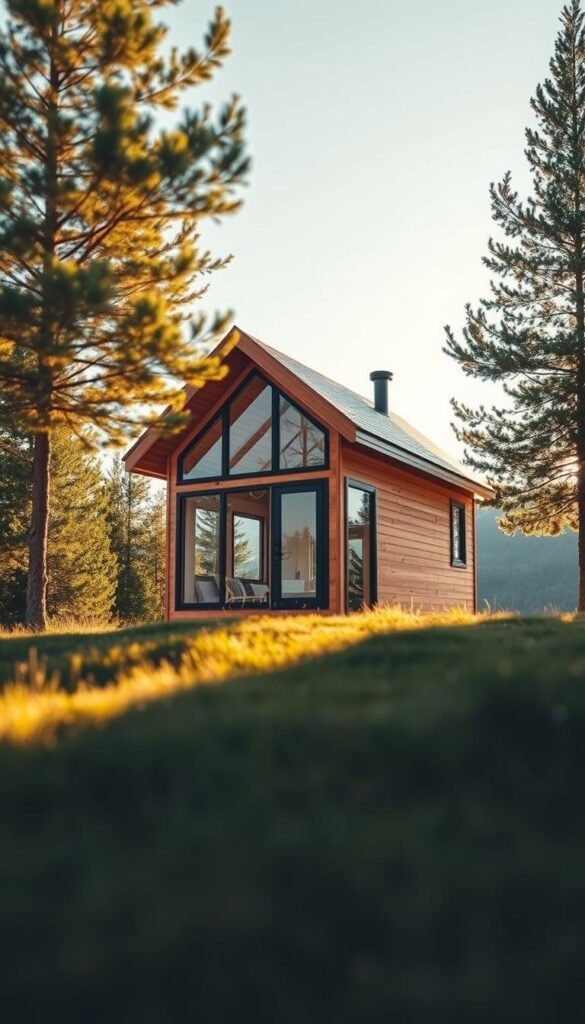
Living requirements dictate spatial needs. Solo residents function well in 150-250 square feet, while couples benefit from 250-350 square feet. Full-time occupants should consider 300-400 square feet for essential storage and privacy needs.
Weekend retreats demonstrate how 120-200 square feet suffices for temporary stays. These vacation-focused layouts prioritize sleeping areas over full kitchens, maximizing utility through simplified amenities.
| Usage | Occupants | Recommended Range |
|---|---|---|
| Full-time | 1-2 people | 300-400 sq ft |
| Part-time | Single | 200-250 sq ft |
| Vacation | 2+ guests | 120-200 sq ft |
Layout proportions impact perceived space. Narrower footprints with extended lengths create better flow than boxy designs. Loft areas remain excluded from official calculations, letting owners add sleeping quarters without affecting code compliance.
Many find 250 square feet strikes the perfect balance. This middle ground supports work-from-home setups while keeping utility costs low. Personal preferences ultimately determine whether to maximize minimalism or edge toward the 400-square-foot limit.
Key Dimensions of Tiny House Design
Mastering compact living requires precise attention to structural measurements. Builders must balance legal requirements with practical functionality when planning these dwellings.
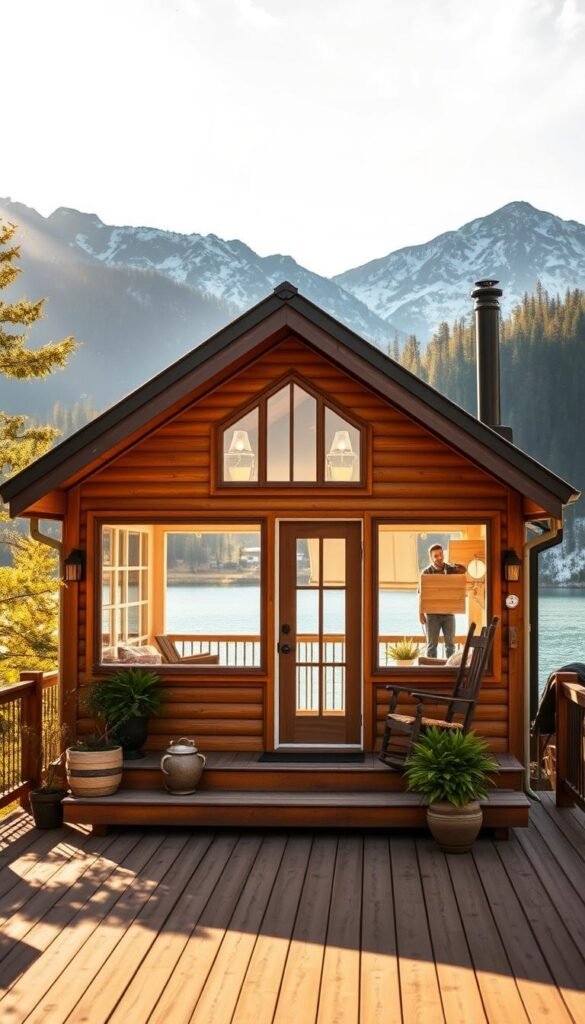
Height, Width, and Length Explained
Vertical clearance tops out at 13.5 feet for roadworthy units. This includes trailer height and roof components. Mobile designs typically measure 8.5 feet wide to avoid special transport permits.
Length variations create spatial diversity. Ranging from 12-foot micro units to 40-foot expanded models, this measurement directly impacts total floor area. Most builders choose 20-32 feet for easier maneuvering.
| Trailer Type | Interior Height | Best For |
|---|---|---|
| Deck-over | 6.5-7 ft | Wider designs |
| Drop axle | 7.5-8.5 ft | Taller ceilings |
Square Footage and Spatial Distribution
Room allocation follows practical patterns. Many designs dedicate equal thirds to living, cooking, and sleeping zones. Narrower 8-foot widths demand efficient layouts, while slightly wider models allow breathing room.
Vertical space utilization proves critical. Main areas often feature 8-foot ceilings, with lofts maintaining 3-4 feet of clearance. Smart dimensional planning prevents costly redesigns and ensures code compliance from initial sketches.
Legal and Zoning Considerations for Tiny Homes
Navigating legal frameworks remains the most complex aspect of compact living. Local zoning laws and building codes create a patchwork of requirements across different jurisdictions. This landscape demands careful research before purchasing land or starting construction.
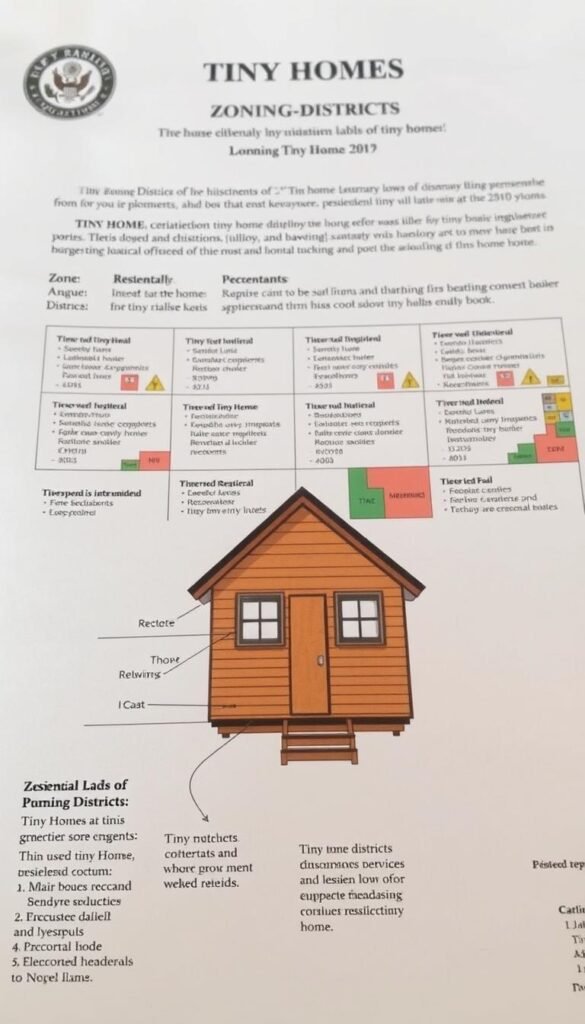
State-Level Compliance Essentials
State laws determine whether compact dwellings qualify as permanent residences. California and Texas recognize tiny homes as ADUs, while other states treat them as recreational vehicles. Foundation-based units often face fewer restrictions than mobile designs.
| Zoning Category | Key Requirements | Common Limitations |
|---|---|---|
| Residential | Minimum 150 sq ft | No wheels allowed |
| RV Park | RVIA certification | Seasonal occupancy limits |
| ADU | Main house required | Max 30% lot coverage |
Municipal Rules and Land Use
Local regulations frequently dictate placement options. Urban areas like Portland offer tiny home villages, while rural zones may require septic system approvals. Utility connections often trigger additional permit requirements.
Many cities now allow compact dwellings in backyard settings through ADU programs. However, parking mobile units on private property still faces challenges in 68% of US counties. Always verify:
- Minimum square footage rules
- Setback requirements
- Occupancy permits
Recent changes show 42 states now have specific codes for compact dwellings. Yet enforcement varies widely—consult local planning departments to avoid costly mistakes.
Optimizing Tiny Home Layouts and Storage Solutions
Effective space management separates functional tiny homes from cramped shelters. Clever design transforms limited areas into versatile living environments through strategic furniture choices and vertical planning.
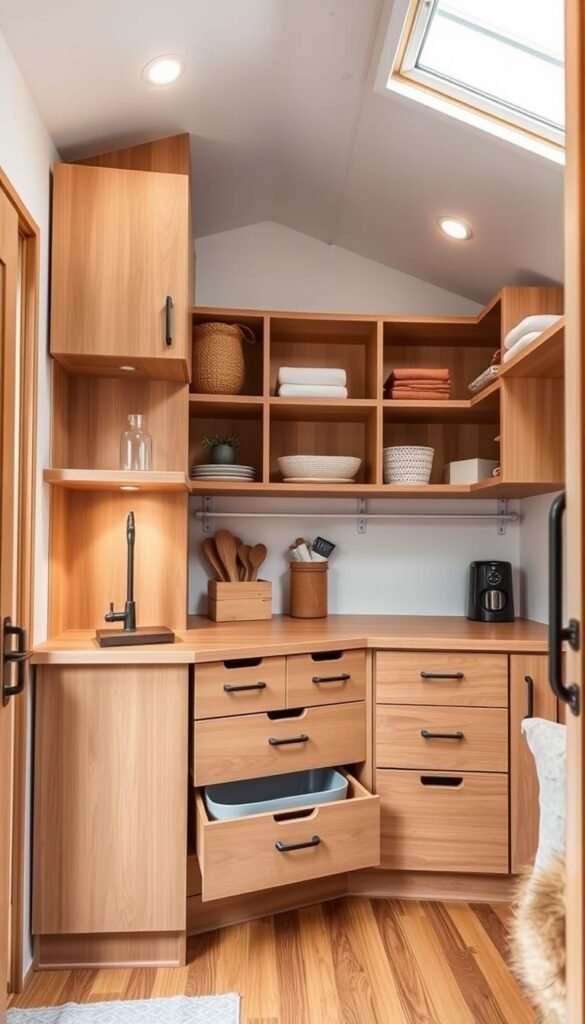
Dual-Purpose Furniture and Built-Ins
Multi-functional pieces serve as space-saving heroes in compact dwellings. Storage ottomans double as seating and linen closets, while fold-down desks create instant workstations. Built-in cabinets in stair risers turn dead space into storage for kitchenware or clothing.
| Storage Solution | Space Saved | Best Use Cases |
|---|---|---|
| Under-stair drawers | 15-20 sq ft | Seasonal items, tools |
| Loft bed platforms | 30-40 sq ft | Clothing, bedding |
| Wall-mounted foldouts | 8-12 sq ft | Workspaces, dining |
Vertical Space Utilization
Floor-to-ceiling shelving maximizes unused wall areas. Magnetic knife strips and hanging pot racks keep kitchens clutter-free. Overhead cabinets above doorways store rarely used items while maintaining clear pathways.
Light colors and large mirrors amplify natural light, creating the illusion of expanded rooms. Sliding barn doors save up to 10 square feet per doorway compared to traditional swing models. These techniques prove essential for maintaining visual breathing room in tight quarters.
Custom-built solutions often outperform standard furniture in efficiency. Though requiring professional installation, tailored millwork ensures every inch contributes to livability. Movable room dividers offer flexible zoning without permanent walls.
The Role of Trailers in Tiny House Construction
Selecting the proper base for mobile dwellings determines their functionality and compliance. Specialized tiny house wheels require engineered frames that balance road safety with living comfort. Builders prioritize trailers offering pre-wired utilities and reinforced crossmembers for structural stability.
Choosing the Right Trailer for Mobility
Axle configuration dictates towing capacity and ride smoothness. Dual house wheels handle 7,000-10,000 pounds, while triple axles manage heavier loads. Brake systems and suspension types vary based on terrain needs—electric brakes suit mountainous regions, surge brakes work better for flat areas.
Trailer Dimensions and Design Considerations
Standard 8.5 feet wide platforms allow highway travel without permits. Drop-axle designs gain 8 inches of interior height compared to deck-over models. Weight distribution requires careful planning—60% mass should sit over axles for safe towing.
Professional trailer selection impacts long-term durability. Quality foundation frames include corrosion-resistant coatings and DOT-approved lighting systems. Many manufacturers offer custom lengths from 20-32 feet, letting owners maximize lot space while maintaining mobility.


